San Gimignano, bristling with ancient towers, is often dubbed the `medieval Manhattan.’ The skyline has scarcely changed since the Middle Ages - yet the famous towers do, indeed, resemble miniature skyscrapers. San Gimignano’s towers were built in the 12th and 13th centuries by the magnati, or nobles, during the Guelf-Ghibelline conflicts. These windowless towers protected the wealthiest families in times of strife: families could retreat into the many rooms inside for months at a time. As well as defending the city, the towers served as status symbols: the higher the tower, the richer and more powerful its owner. Given its spectacular setting, San Gimignano is one of the most touristy towns in Tuscany but manages to rise above the masses. Come for its medieval mood but try and linger after the tour buses have left town. Reward yourself with a toast to medieval glory – in local Vernaccia wine, of course.
Explore our collection of villas near San Gimignano
San Gimignano
-
-
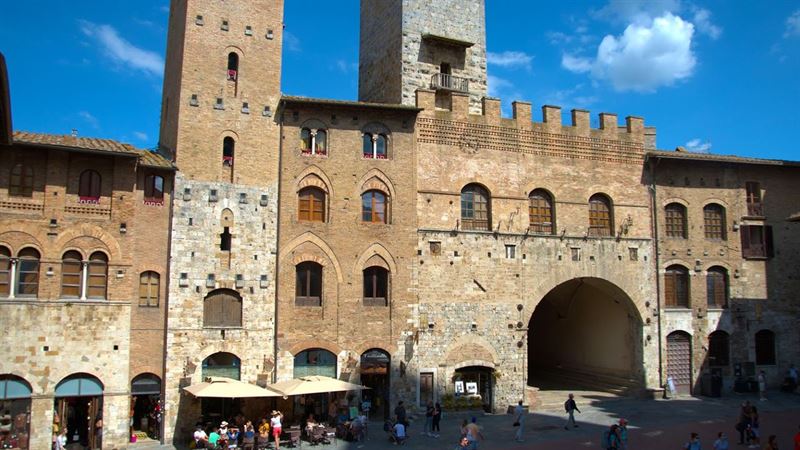
Top Ten Things to Do
The towers alone make a visit to this medieval time capsule worthwhile, but San Gimignano abounds in quirky sights. Make sure to stay after the crowds have gone. As for the museums, note that one combined ticket allows access to them all.
-
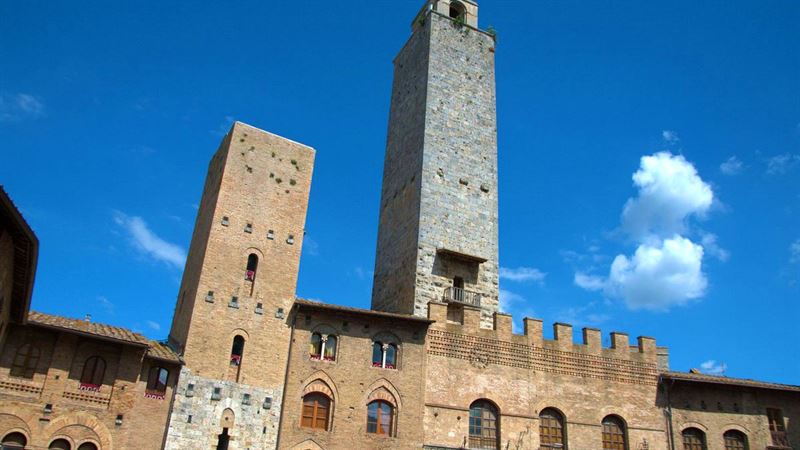
1. Exploring the towers of power
The tower-studded skyline is one of the most spectacular sights in Tuscany. In its heyday, the city had a total of 72 towers, only 14 of which remain. Tower-houses were castle-residences serving as both warehouses and fortresses. These were self-sufficient enclaves symbolising the wealth of the feudal nobles or prosperous merchants and their scorn for civil authority. The arrival of the Black Death in 1348 put an end to these towers of power. It also put an end to prosperity in San Gimignano until the 20th century. The city faded, compounded by a lack of political autonomy as it fell under Florentine control. In short, San Gimignano languished as an economic backwater, by passed by the Renaissance – for which we are eternally grateful.
The remaining towers are concentrated around the Piazza del Duomo and Piazza della Cisterna, which is teeming with tourists all year round. The tall defensive towers dominate the two main squares at the highest point of the town and doubled as status symbols, to flaunt the owners’ wealth and social standing. An additional theory holds that the towers were also linked to the textile trade, which helped make San Gimignano rich. As there was little room at ground level, some towers may have been built to house valuable dyed fabrics. However, the consensus is that these imperious towers began as defensive works but swiftly became status symbols, much like a Manhattanite skyscraper today.
Web: https://www.sangimignano.com/en/ -
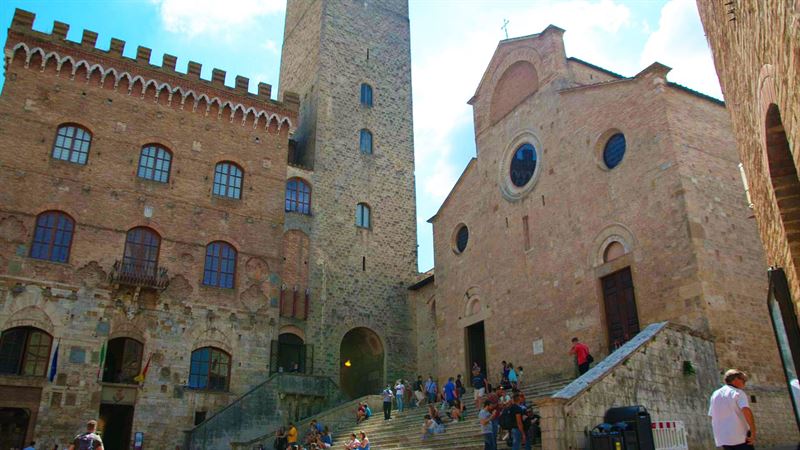
2. Collegiate Basilica of Santa Maria Assunta – Cathedral of San Gimignano
Confusingly also known as the Cathedral of San Gimignano, the Collegiata is the most impressive church in town. This gorgeous Romanesque church will also detain you longest as every patch of wall space is covered in frescoes. The mysticism of the spot is rivalled by its sense of intimacy, from the Tuscan banded arches to the graceful columns that support them. The north aisle displays Bartolo di Fredi’s dramatic scenes from the Old Testament (1367), while the opposite aisle shows Lippo Memmi’s Life of Christ (1333–41). The nave is devoted to The Last Judgement by Taddeo di Bartolo (1393–6). Contrast these Gothic-style narrative paintings with Ghirlandaio’s lyrical Renaissance frescoes (1475) on the life of a local saint, in the chapel of Santa Fina. This beloved saint is remembered every March, with the blossoming of yellow violets, flowers said to symbolise Santa Fina, in the local countryside.
Address: Cathedral of San Gimignano
Piazza Duomo, 8, 53037 San Gimignano
Tel: 0577 286300
Web: www.duomosangimignano.it -
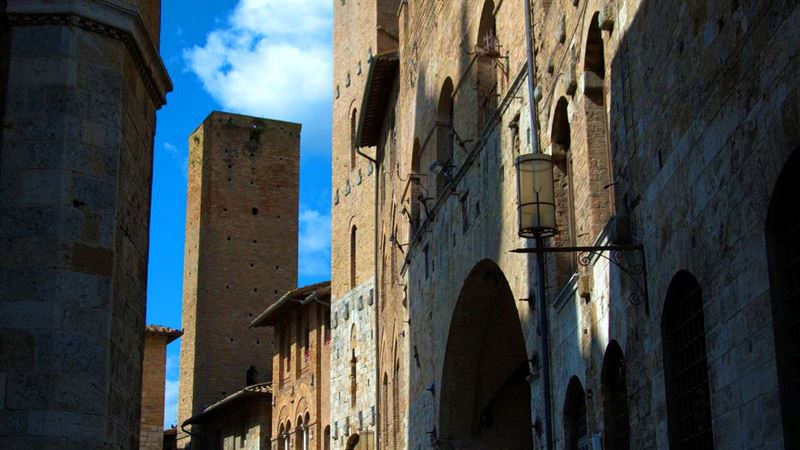
3. Torre e Casa Campatelli
This intriguing tower-house was home to the last resident of an illustrious Florentine clan. In 2005 Lydia Campatelli left the tower to the Fondo Ambiente Italiano (FAI), the respected Italian heritage body. Sandwiched between 18th-century townhouses, this 13th-century tower is the only one in town to have preserved its original layout and hollowed-out interior. Inside, it looks just as its last owner left it. There’s a display of art by Guido Peyron, Lydia Campatelli’s uncle, along with memorabilia linked to this Florentine merchant and landowning family. Apart from the pleasures of exploring an antique-filled tower house, enjoy the feeling of exploring a 19th-century Tuscan home, reflecting the upper-middle class tastes of the day.
Best of all, lap up the impressive audio-visual presentation, the Thousand Years of San Gimignano, outlining the history of the city (presented in English and Italian). The presentation reveals how the medieval skyscrapers signified the civilising effect of urban living, with the signori (feudal lords) encouraged to relinquish their castles for city life. There are broader historical points made about Tuscan medieval history. The borgo, or fortified city, also became home to landowners and merchants, and became a symbol of safety during the city-state conflicts.
Address: Via S. Giovanni, 15, 53037 San Gimignano
Tel: 0577 941419
Web: https://fondoambiente.it/torre-e-casa-campatelli-eng -
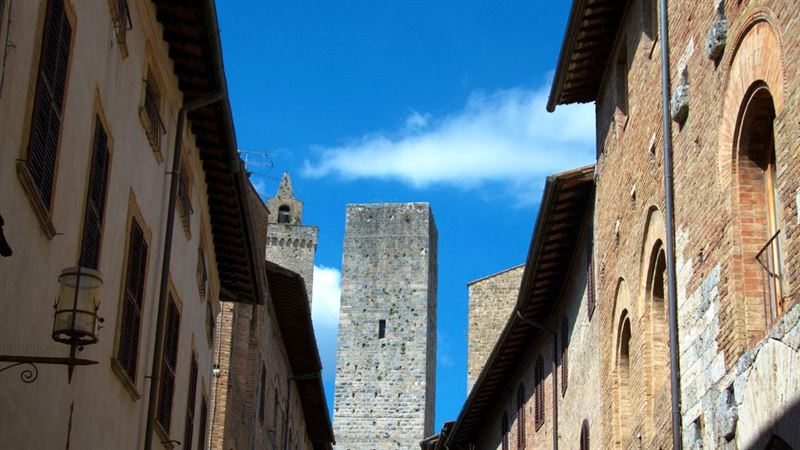
4. Torre Grossa – for medieval vertigo
The Palazzo Comunale (also known as Palazzo del Podesta) is the forbidding fortress at the centre of city life since the days when Dante came on an ambassadorial visit from Florence. Ideally, explore both the frescoed town hall (see below) and climb the tower. But if you’re feeling lazy and it’s a perfect, windless day, then you might just like to focus on the climb to the top. Completed in 1311, the town hall tower, the Torre Grossa, is the tallest in the town (at 54 metres/175 feet) and the only one you can climb. If you take it slowly, the metallic staircase is pretty easy to climb, with only the final part providing any difficulty. The views of the Colle di Val d’Elsa from the top are spectacular, as is the bird’s eye view of San Gimignano itself.
Address: Piazza Duomo, 2, 53037 San Gimignano
Tel: 0577 286300
Web: www.sangimignanomusei.it -
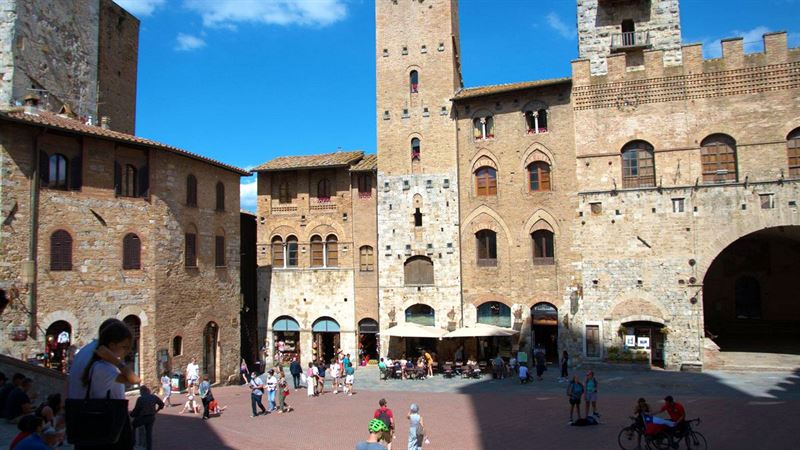
5. Palazzo Comunale – culture and a climb to the top
The Palazzo Comunale, known by different local names, has been the seat of local government since medieval times. This imposing, fortified building dominates the square today, as surely as it has always dominated the lives of local citizens. The Tuscan town hall, with accompanying bell-tower, the Torre Grossa (see above) encapsulates a civic ideal. In the past, it promised a degree of democracy to the merchant guilds, the nobility and the people. On the first floor of the Town Hall is the frescoed Sala di Dante (also known as the Sala del Consiglio), recording Dante’s visit in 1299. On display is a gorgeous array of medieval art, notably Lippo Memmi's early-14th-century Maestà: the enthroned Virgin and Child is surrounded by angels, saints and dignitaries, including the kneeling podestà, the town’s leading magistrate of the time. The floor above displays moral lessons on good and bad government, much as in Siena.
The second floor houses the Pinacoteca, the Picture Gallery, which features works dating from the 13th to the 15th century. Among the museum’s many good paintings is a set of early 14th-century frescoes by Memmo di Filippuccio – rare in that they depict secular rather than religious scenes. Known as the Wedding Frescoes, these scenes show a young bride and groom sharing a bath and climbing into their nuptial bed – an intimate glimpse into the private life of medieval Italy.
Address: Piazza del Duomo,
San Gimignano
Tel: 0577 286300
Web: www.sangimignanomusei.it -
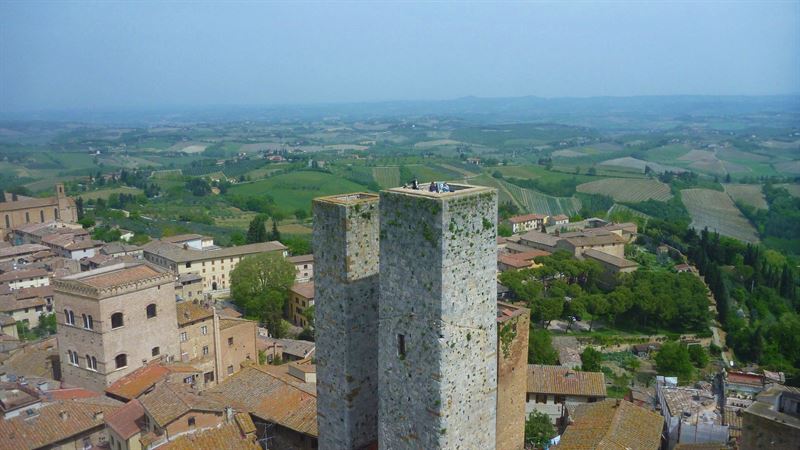
6. Sant’Agostino – for magical frescoes
Every church in San Gimignano offers some reward but perhaps the best is Sant’Agostino. Set in the northern end of town, close to Porta San Matteo, this church is a tribute to St Augustine. The barn like church is unadorned on the outside but is anything but on the inside. Designed in Romanesque style with Gothic elements, the church was begun in 1280 and finished in 1298. The highlights are Benozzo Gozzoli’s faded frescoes on the Life of St Augustine (1465) around the chancel. You will find the same love of colour, rich clothing and exact portraiture as in Gozzoli’s other frescoes, notably in The Journey of the Magi in the Palazzo Medici Riccardi in Florence. Bring coins to activate the lights to see the frescoes behind the high altar. The church is still an integral part of life in San Gimignano, with both Mass and concerts held here.
Address: Piazza Sant'Agostino, 10, 53037 San Gimignano
Tel: +39 0577 941519
Web: www.sangimignano.com -
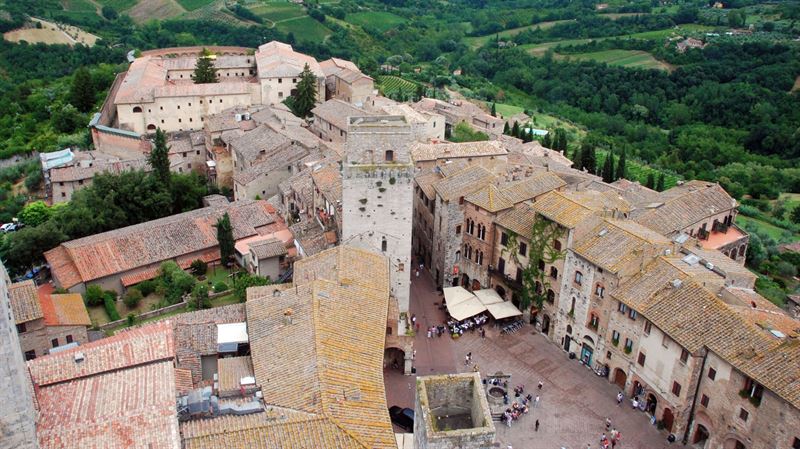
7. Walk the city walls to a wine-tasting
Take a short walk along the city walls to la Rocca, the 14th-century fortress, before leaving town. This semi-restored fortress enjoys views over terraced gardens and olive groves winding down to the Vernaccia vineyards. These vineyards produce the celebrated white wine that was even mentioned in Dante’s Divine Comedy. The Museo Vernaccia (Vernaccia Wine Museum) is the place to sample a range of local wines. Apart from the famous Vernaccia, you can taste or buy San Gimignano DOC wines (Rosso/red, Rosato/rose and sweet Vin Santo dessert wine). If you’re interested in wines from further afield, opt for Chianti DOCG wines, along with Toscana IGT wines. An audio-visual display celebrates the history of wine-making in the area.
Address: Via della Rocca, 1, 53037 San Gimignano
Tel: 0577 941267
Web: www.sangimignanomuseovernaccia.com -
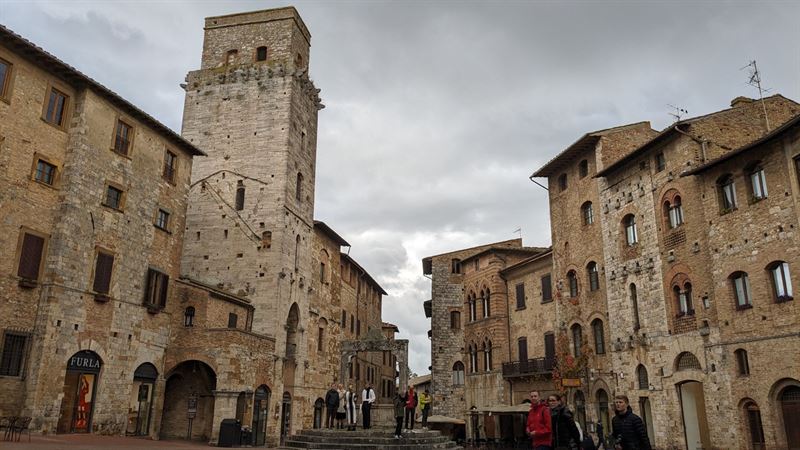
8. Polo Museale Santa Chiara – eclectic museum complex
The former convent of Santa Chiara is now home to several museums. These are relatively minor museums, curiosities of sorts, but still worthwhile. The Museo Archeologico (Archaeological Museum) displays Etruscan and Roman finds, including bronze figurines and vivid mosaic tiles. Nearby, the Spezieria di Santa Fina is home to partially reconstructed pharmacy dating from the 15th-century. On display are ceramic-and-glass vessels designed for herbal remedies and healing lotions and potions. Upstairs, the Galleria d’Arte Moderna (Gallery of Modern and Contemporary Art) features works by Italian artists. One combined ticket allows access to all museums.
Address: Via di Via Folgore da San Gimignano,
San Gimignano
Web: www.sangimignanomusei.it -
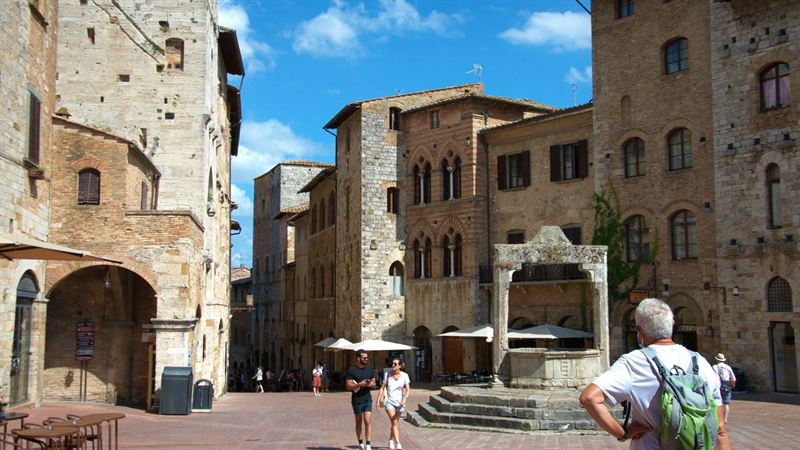
9. Piazza della Cisterna – essence of San Gimignano
The Piazza della Cisterna is a medieval time capsule, best appreciated after the hordes have gone home. This charming triangular square boasts a 13th-century well, which gives the square its name. The piazza is now just moody spot for a photo but once marked the junction between the Via Francigena pilgrimage route and the road leading from Pisa to Siena. This is still the prettiest piazza in town, paved with bricks in a herringbone design and flanked by medieval mansions and tower-houses dating from the 13th century. On one side stands the so-called `devil’s tower’ and the twin towers marking the residence of the Ardinghelli, the main Guelph family in the town.
Address: Piazza Della Cisterna, 20, 53037 San Gimignano
Tel: +39 0577 940008
Web: https://www.sangimignano.com/en/what-to-see/city-centre-attractions/ -
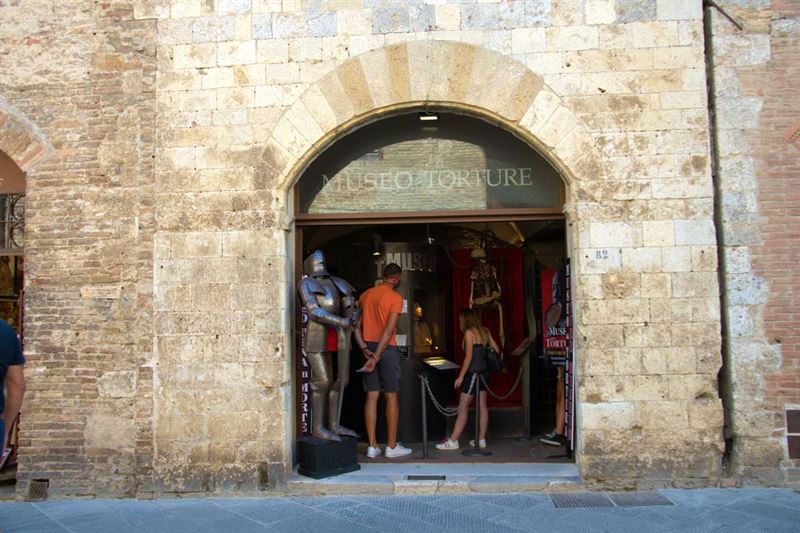
10. Museo della Tortura - medieval torture
If your teenage children are torturing you for more bloodthirsty entertainment, consider the Museo della Tortura (Museum of Torture) just east of the Piazza della Cisterna. After too many churches, this disturbingly gruesome collection of medieval instruments of torture might catch your teenager’s imagination. It is, as is fitting, disturbing and provocative rather than entertaining.
Address: Via San Giovanni 125, 53037, San Gimignano Italy
Tel: +39 0577 940526
Web: www.torturemuseum.it -
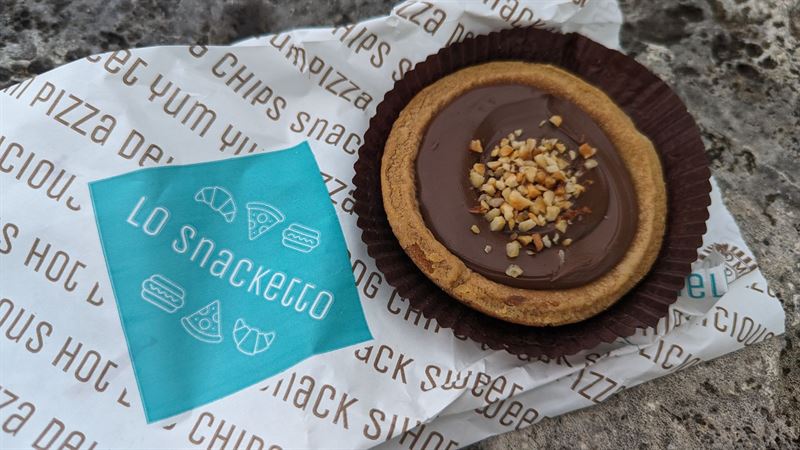
Eating & Drinking
Vernaccia di San Gimignano is the characteristic white wine - crisp, full-bodied, golden-hued, and popular since Dante’s day. To round off a Tuscan fest, dip cantuccini, crunchy almond biscuits, into Vin Santo, the region’s amber-hued dessert wine.
Tuscany’s olive oil has long been famous for its quality and excellent flavour and texture. The San Gimignano locals are passionate about olive oil, where olives have been grown locally since Etruscan times. Such is the case on the Montenidoli estates. This cru of Extra Vergine di San Gimignano is a tasty example.
Meats are to the fore, with fennel salami often on the menu, as is rabbit. The meat dish par excellence is still the bistecca alla fiorentina, a vast, tender, juicy and succulent T-bone steak. That said, given San Gimignano’s closeness to Siena, expect plenty of Sienese dishes, too. In the Sienese countryside, the white-striped Cinta Senese breed has been producing the region’s finest pork and charcuterie since the Etruscan era. Hunting is a popular sport, resulting in plentiful offerings of cinghiale (wild boar), which come in many guises on local menus. Despite conservationists’ pleas, small birds, from sparrows to quail, are still considered fair game. -
Cum Quibus
Run by an enthusiastic young team, this pricey gourmet spot makes a change from run-of-the-mill tourist traps. The focus is on intensely-flavoured Tuscan ingredients, ranging from rabbit-stuffed cannelloni to chicken liver with Vin Santo or a squid-with-panzanella combination. The rustic-style dining room is at odds with an ambitious menu, one that delivers curious taste combinations that work. This is a recommended Michelin Bib Gourmand, meaning a charming small restaurant.
Address: Via S. Martino, 17, 53037 San Gimignano (SI)
Web: www.cumquibus.it -
Ristorante Dorandò
This atmospheric gourmet restaurant is set in a 14th-century mansion close to Piazza del Duomo. The cosy mood is accentuated by the ancient stonework and vaulted brick ceilings, with paintings by local artists on the walls. This upmarket, stylish spot specialises in recipes from the past, such as rabbit stuffed in pasta, or crispy vegetables with San Gimignano saffron. The dishes are matched by a fine Tuscan wine list, as only to be expected in a Michelin Bib Gourmand restaurant.
Address: Vicolo dell'Oro, 2, 53037 San Gimignano
Tel: +39 0577 941862
Web: www.ristorantedorando.it -
Osteria delle Catene
Tucked away on a side street, this friendly, mid-priced inn serves an interesting twist on the Tuscan menu, with plenty of local saffron dishes. Choose between the brick, vaulted interior and the small, sloping terrace. Fans of saffron should try the `medieval saffron soup’ (with leeks and ham) or pici, a stubby pasta, with saffron and ricotta, or a saffron chicken main course. Finish with the mascarpone and saffron tart or panna cotta with saffron and pine nuts. If you’re not into saffron, opt for hearty staples such as wild boar, sausages and beans. Typical meaty dishes include Chianina beef casserole or wild boar ragu with pappardelle pasta.
Address: Via Mainardi 18, San Gimignano
Tel: +39 0577 941966
Web: www.osteriadellecatene.it -
Ristorante Da Pode
Set in a converted farmhouse 2kms out of town, the setting is charming, all beams and terracotta floors. On the menu are big portions of traditional Tuscan dishes prepared by Signora Lucia. Tuck into T-bone steak or pasta with a meaty (ragu) sauce. This mid-priced inn is also a recommended Michelin Bib Gourmand, meaning a charming, small restaurant.
Address: Localita Sovestro 63, 53037, San Gimignano
Tel: +39 0577 943126
Web: www.dapode.com -
Ristorante Tre Archi
A husband and wife team run this typical, good-value Tuscan trattoria. The homely, rustic-style dining room is a backdrop for a feast of hearty ribollita soup, tagliatelle with funghi porcini (ceps, in season), taglierini pasta with truffles (in season), T-bone steak, grilled lamb or wild boar stew. Meals usually begin with a tasting of Tuscan olive oils. The restaurant is in Castel San Gimignano, almost equidistant between Colle di Val d’Elsa (10 kms), San Gimignano (12kms) and Volterra (15 kms).
Address: Via di Castel S. Gimignano 35/B,
53034 Colle di Val D'Elsa
Tel: +39 0577 953099
Web: https://trearchiristorante.it/ -

Shopping
San Gimignano is geared towards tourism and the shopping reflects this. While there is little original or outstanding to buy, the speciality food and wine shops are good for gifts, or for topping up supplies in the villa. The local olive oil is recommended. (Olive oil quality is measured by acid content, with finest oil being extra vergine, which has less than one percent acid content).
-
Speciality food shops
The bustling main street is lined with speciality food shops so follow your nose. The best buys tend to be wild-boar salami, olive oil (olio extra vergine di oliva Toscano IGP) and Vernaccia wines (www.vernaccia.it). Other ingredients to look out for are: San Gimignano saffron (lo zafferano di San Gimignano DOP); cured meat (il prosciutto toscano DOP); and fennel salami (la finocchiona toscana IGP).
-
Enoteca Corsi
This is a reliable wine shop at the entrance to San Gimignano. On sale are Super Tuscans as well as wines from Chianti, Montalcino, and San Gimignano itself.
Address: Via S. Giovanni, 127, 53037 San Gimignano
Tel: +39 347 541 0463
Web: https://www.enotecacorsi.it/ -
Galleria Gagliardi
This statement-making contemporary art gallery claims to have the largest selection of contemporary ceramic sculptors in Italy as well as thought-provoking paintings.
Address: Via di San Giovanni 57, San Gimignano
Tel: +39 393 164 3615
Web: www.galleriagagliardi.com -
La Bottega del Sale
This gallery, run by a San Gimignano-born photographer, is best for striking black and white landscape photography.
Address: Piazza Duomo, 13, 53037 San Gimignano
Tel: +39 347 485 6657
Web: www.duccionacci.it -
Parking & Getting Around
In the rush to enjoy rustic perfection, tourism has turned high-season San Gimignano into an elbow-to-elbow mêlée. And this is San Gimignano’s dilemma: her beauty is in danger of becoming her beast. With this in mind, try to arrive very early or, better still, stay late, at least to enjoy dinner in town and wander the moody medieval alleyways in peace.
To savour San Gimignano, simply trust your feet. A town of medieval tower-houses was not designed for cars. The town is fully pedestrianised so walking is one of the city’s greatest joys. Conversely, cars need to be deposited in a car park for your visit. The city is in a ZTL system (Limited Traffic Zone) so closed to traffic in the historic centre. Car parks lie outside the city walls.
Depending on your arrival point, choose the car parks either just south or just north of the town centre. In the south, convenient if arriving from Poggibonsi, Siena or Florence, opt for the bigger, cheaper Parcheggio Giubileo (further out, around 6€ daily) or the smaller Parcheggio Montemaggio (closer in, around 20€ daily). In the north, convenient if arriving from Certaldo, opt for Parcheggio Bagnaia Superiore or Parcheggio Bagnaia Inferiore (at a rate of around 15€ daily). All car parks are controlled by means of security cameras.
https://comune.sangimignano.si.it/it/page/1371
For more information, along with a parking map, see the tourist board site:
Web: www.sangimignano.com/en/san-gimignano/guide-to-the-town/parking-and-urban-transport.asp -
Tuscan Villas near San Gimignano
Nestled in the heart of the enchanting Tuscan landscape, our collection of villas near San Gimignano offers a truly immersive experience for those seeking the perfect blend of tranquillity and cultural richness. A short distance from the iconic medieval towers of San Gimignano, these carefully curated villas provide a unique opportunity to explore the historic charm of this UNESCO World Heritage site while enjoying the comforts of a private retreat. Whether perched on the gentle hills of Siena or immersed in the vineyards of Chianti, each villa captures the essence of Tuscany, inviting guests to savour the region's renowned wines, indulge in local delicacies, and bask in the breathtaking scenery. Immerse yourself in the allure of San Gimignano and its surroundings.
Explore our Siena and Chianti villas to start planning your Tuscan holiday today.

























